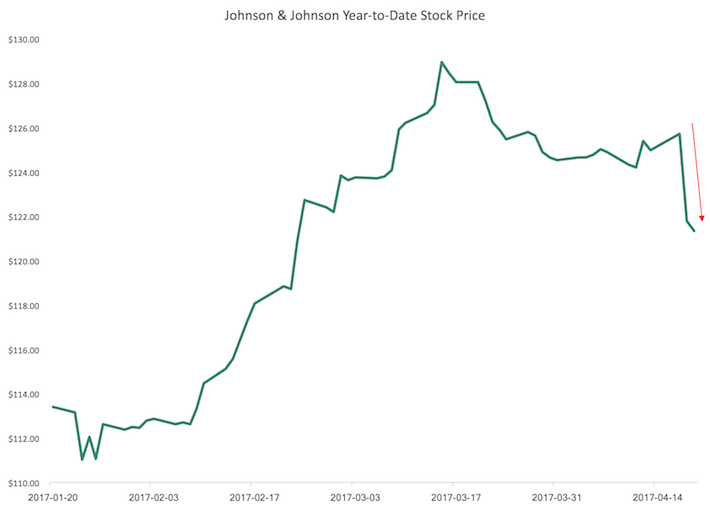
Johnson & Johnson (JNJ) is one of the most stable businesses around.
The company’s statistics are impressive:
Johnson & Johnson’s dividend history is particularly impressive. The company qualifies to be not only a Dividend Aristocrat, but a member of the Dividend Kings – a group of elite companies with 50+ years of consecutive annual dividend increases.
You can see the list of all 19 Dividend Kings here.
The stock of a stable company like Johnson & Johnson does not typically undergo rapid price fluctuations. However, the company’s stock price decline by ~3% on Tuesday after the company reported earnings for the first quarter of 2017.

Source: Yahoo! Finance
After surging for most of 2017, Johnson & Johnson’s stock is presenting more of a bargain today. This article will describe the events that caused Johnson & Johnson’s recent price swing and describe why this presents a buying opportunity, rather than a reason to be concerned.
Current Events
The catalyst behind Johnson & Johnson’s stock price decline was their first quarter earnings release.
On the surface, the company’s performance appears satisfactory:

Source: Johnson & Johnson First Quarter Investor Presentation
The most notable statistics are listed below.
Here’s what the company’s Chairman and Chief Executive Officer, Alex Gorsky, had to say about the company’s first-quarter results:
“Johnson & Johnson’s first-quarter results are in line with our expectations and we are confident we will achieve the full-year financial guidance we established at the beginning of the year.”
“The pending acquisition of Actelion demonstrates our ongoing commitment to bringing innovation to patients with significant unmet needs, and provides a unique opportunity for us to expand our portfolio with leading, differentiated in-market medicines and promising late-stage products. We look forward to the associates from Actelion joining the Johnson & Johnson Family of Companies.”
I was surprised to see this company’s stock decline by 3% on the back of 7.5% operational earnings-per-share growth. Indeed, it was not the company’s earnings that disappointed the markets – rather, Johnson & Johnson’s revenue figures were below expectations.















